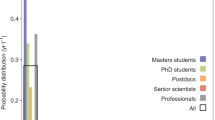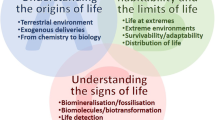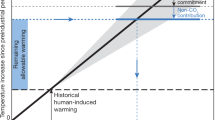Abstract
The carbon footprint of astronomical research is an increasingly topical issue with first estimates of research institute and national community footprints having recently been published. As these assessments have typically excluded the contribution of astronomical research infrastructures, we complement these studies by providing an estimate of the contribution of astronomical space missions and ground-based observatories using greenhouse gas emission factors that relates cost and payload mass to carbon footprint. We find that worldwide active astronomical research infrastructures currently have a carbon footprint of 20.3 ± 3.3 MtCO2 equivalent (CO2e) and an annual emission of 1,169 ± 249 ktCO2e yr−1 corresponding to a footprint of 36.6 ± 14.0 tCO2e per year per astronomer. Compared with contributions from other aspects of astronomy research activity, our results suggest that research infrastructures make the single largest contribution to the carbon footprint of an astronomer. We discuss the limitations and uncertainties of our method and explore measures that can bring greenhouse gas emissions from astronomical research infrastructures towards a sustainable level.
This is a preview of subscription content, access via your institution
Access options
Access Nature and 54 other Nature Portfolio journals
Get Nature+, our best-value online-access subscription
$29.99 / 30 days
cancel any time
Subscribe to this journal
Receive 12 digital issues and online access to articles
$119.00 per year
only $9.92 per issue
Buy this article
- Purchase on Springer Link
- Instant access to full article PDF
Prices may be subject to local taxes which are calculated during checkout


Similar content being viewed by others
Data availability
All data used for this work are available for download at https://doi.org/10.5281/zenodo.5835840.
Code availability
All code used for this work is available for download at https://doi.org/10.5281/zenodo.5835840.
References
IPCC: Summary for Policymakers. In Climate Change 2021: The Physical Science Basis (eds Masson-Delmotte, V. et al.) (Cambridge Univ. Press, in the press).
Guterres, A. Guterres: the IPCC report is a code red for humanity. United Nations https://unric.org/en/guterres-the-ipcc-report-is-a-code-red-for-humanity (2021).
Marshall, P. J. et al. Low-energy astrophysics. Preprint at https://arxiv.org/abs/0903.3384 (2009).
Matzner, C. D. et al. Astronomy in a Low-Carbon Future Canadian Long Range Plan for Astronomy and Astrophysics White Paper LRP2020 (2019); https://www.zenodo.org/record/3758549#.YRJLHS0itHQ
Williamson, K., Rector, T. A. & Lowenthal, J. Embedding climate change engagement in astronomy education and research. Bull. Am. Astron. Soc. 51, 49 (2019).
Stevens, A. R. H., Bellstedt, S., Elahi, P. J. & Murphy, M. T. The imperative to reduce carbon emissions in astronomy. Nat. Astron. 4, 843–851 (2020).
Le Quéré, C. et al. Towards A Culture of Low-carbon Research for the 21st Century (Tyndall Centre, 2015).
Rosen, J. A greener culture. Nature 546, 565–567 (2017).
Hamant, O., Saunders, T. & Viasnoff, V. Celebrate sustainable travel at conferences. Nature 573, 451–452 (2019).
Burtscher, L. et al. The carbon footprint of large astronomy meetings. Nat. Astron. 4, 823–825 (2020).
Barret, D. Estimating, monitoring and minimizing the travel footprint associated with the development of the Athena X-ray Integral Field Unit. Exp. Astron. 49, 183–216 (2020).
Jahnke, K. et al. An astronomical institute’s perspective on meeting the challenges of the climate crisis. Nat. Astron. 4, 812–815 (2020).
Space System Life Cycle Assessment (LCA) Guidelines ESSB-HB-U-0051 (ESA LCA Working Group, 2016); https://www.bilans-ges.ademe.fr/fr/basecarbone/donnees-consulter/choix-categorie
Maury, T., Loubet, P., Serrano, S. M., Gallice, A. & Sonnemann, G. Application of environmental life cycle assessment (LCA) within the space sector: a state of the art. Acta Astronaut. 170, 122–135 (2020).
Breitenstein, A. Base Carbone (ADEME, 2021); https://www.bilans-ges.ademe.fr/fr/basecarbone/donnees-consulter/choix-categorie
Wilson, A. R. Advanced Methods of Life Cycle Assessment for Space Systems. PhD thesis, Univ. Strathclyde (2019).
Geerken, T., Vercalsteren, A. & Boonen, K. User experience of the ESA LCA handbook and database. In 3rd Clean Space Industry Days (ESTEC, 2018); https://indico.esa.int/event/234/contributions/4023/attachments/3020/3643/CSID_2018_User_experience_of_the_ESA_LCA_Handbook_and_database_Theo_Geerken.pdf
Friedlingstein, P. et al. Global carbon budget 2020. Earth Syst. Sci. Data 12, 3269–3340 (2020).
Hickel, J. Quantifying national responsibility for climate breakdown: an equality-based attribution approach for carbon dioxide emissions in excess of the planetary boundary. Lancet Planet Health 4, e399 (2020).
Alleva, L. Taking time to savour the rewards of slow science. Nature 443, 271 (2006).
Hunter, J. D. Matplotlib: a 2-D graphics environment. Comput. Sci. Eng. 9, 90–95 (2007).
Austin, J., Huesing, J., Soares, T. & Innocenti, L. Developing a standardised methodology for space-specific life cycle assessment. In Challenges in European Aerospace, 5th CEAS Air & Space Conference (Aeronautics & Aerospace Europe Platform, 2015).
Chanoine, A. Environmental impacts of launchers and space missions. In Clean Space Industrial Days, October 25th 2017 (ESTEC, 2017); https://indico.esa.int/event/181/contributions/1443/attachments/1336/1561/2017_CSID_Chanoine_LCA_launcher_space_missions_FV.PDF
De Santis, M. et al. Environmental impact assessment of space sector: LCA results and applied methodology. In Proc. 4th CEAS Conference (eds Melin, T. et al.) 364–373 (Linköping Univ. Electronic Press, 2013).
Maury, T. Consideration of Space Debris in the Life Cycle Assessment Framework. PhD thesis, Univ. Bordeaux (2019).
Aujoux, C., Kotera, K. & Blanchard, O. Estimating the carbon footprint of the GRAND project, a multi-decade astrophysics experiment. Astropart. Phys. 131, 102587 (2021).
GRAND FAQ. CNRS https://grand.cnrs.fr/grand/faq/ (2021).
The E-ELT Construction Proposal (ESO, 2012).
FAQ VLT/Paranal. ESO https://www.eso.org/public/about-eso/faq/faq-vlt-paranal (2021).
Chardonnet, C., Diaz, I., Lemaître, M. & Pinon, L. Synthèse de l’enquête sur les coûts complets et ressources des infrastructures de recherche de la feuille de route nationale 2016 (DGRI/SPFCO/B4, 2016); https://cache.media.enseignementsup-recherche.gouv.fr/file/Infrastructures_de_recherche/76/7/2016_synthese_enquete_1146767.pdf
Lodewijk, W. Europe’s Quest for the Universe (EDP Sciences, 2006).
Flagey, N., Thronas, K., Petric, A. O., Withington, K. & Seidel, M. J. Estimating carbon emissions at CFHT: a first step toward a more sustainable observatory. J. Astron. Tel. Instrum. Syst. 7, 017001 (2021).
Simons, D. 2019 CFHT Annual Report (Canada-France-Hawaii Telescope Corporation, 2019); https://www.cfht.hawaii.edu/AnnualReports/AR2019.pdf
Ariane 5 ECA. ESA https://www.esa.int/Enabling_Support/Space_Transportation/Launch_vehicles/Ariane_5_ECA (2021).
E-ELT telescope overview. ESO https://elt.eso.org/telescope (2021).
Song, G. Carbon footprint of a scientific publication: a case study at Dalian University of Technology, China. Ecol. Indic. 66, 275-282 (2015).
2021 Global Observatory Directory (Go Astronomy, accessed 11 August 2021); https://www.go-astronomy.com/observatories.htm
Payne, M. List of Observatory Codes (Minor Planet Center, accessed 11 August 2021); https://www.minorplanetcenter.net/iau/lists/ObsCodesF.html
Espinosa, J. M. R. Geographical and Gender Distribution of Individual and Junior Members (International Astronomical Union, accessed 4 August 2021); https://www.iau.org/administration/membership/individual/distribution/
Ahn, S.-H. Economic power, population, and size of astronomical community. J. Korean Astron. Soc. 52, 159–172 (2019).
Acknowledgements
We thank R. Arsenault for the insights that he provided on the carbon footprint estimates of ESO infrastructures and sites. We furthermore thank M. de Naurois, C. Duran, Z. Fan, C.-U. Lee, A. Klotz, K. Kotera, K. Tatematsu and S. O’Toole for having provided data that were useful for this research. In addition, we thank N. Flagey, L. Pagani, G. Song, M. Smith-Spanier and A. Ross Wilson for useful discussions and K. Lockhart and S. Blanco-Cuaresma for their help with ADS. This research has made use of NASA’s Astrophysics Data System Bibliographic Services. In addition, this work has made use of the Python 2D plotting library matplotlib21.
Author information
Authors and Affiliations
Contributions
J.K. gathered the activity data, made the estimates of the emission factors, estimated the carbon footprints and drafted the paper. All authors defined the analysis method and the IRAP carbon footprint attribution method, elaborated on the discussion section and reviewed the manuscript.
Corresponding author
Ethics declarations
Competing interests
The authors declare no competing interests.
Peer review
Peer review information
Nature Astronomy thanks Andrew Wilson, Robin Arsenault and Lewis Ball for their contribution to the peer review of this work.
Additional information
Publisher’s note Springer Nature remains neutral with regard to jurisdictional claims in published maps and institutional affiliations.
Supplementary information
Supplementary Information
Supplementary text, references and Tables 1 and 2.
Supplementary Data 1
Data used for the paper.
Rights and permissions
About this article
Cite this article
Knödlseder, J., Brau-Nogué, S., Coriat, M. et al. Estimate of the carbon footprint of astronomical research infrastructures. Nat Astron 6, 503–513 (2022). https://doi.org/10.1038/s41550-022-01612-3
Received:
Accepted:
Published:
Issue Date:
DOI: https://doi.org/10.1038/s41550-022-01612-3
This article is cited by
-
UK health researchers’ considerations of the environmental impacts of their data-intensive practices and its relevance to health inequities
BMC Medical Ethics (2023)
-
The carbon footprint of research papers
Nature Photonics (2023)
-
The energy consumption and carbon footprint of the LOFAR telescope
Experimental Astronomy (2023)
-
The Athena X-ray Integral Field Unit: a consolidated design for the system requirement review of the preliminary definition phase
Experimental Astronomy (2023)
-
Astronomy’s carbon footprint is sky-high
Nature (2022)



